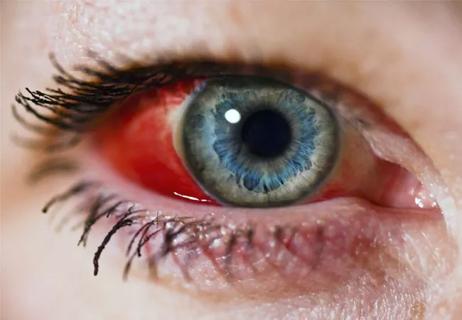Variables affect nuances of the conversation

When people first learn what pediatric oncologist Seth Rotz, MD, does for a living, they tend to imagine wall-to-wall sadness.
Advertisement
Cleveland Clinic is a non-profit academic medical center. Advertising on our site helps support our mission. We do not endorse non-Cleveland Clinic products or services. Policy
“People have this conception that every day, I go to work and tell someone that their kid has cancer or their kid is dying,” says Dr. Rotz (above). “I do those things sometimes. Those are powerful conversations. But it’s not what I do day in and day out.”
An unexpected aspect of specializing in childhood cancer is that often the disease is curable, and he has the privilege of seeing many patients fully recover. “They go through really hard periods of their life, and their families go through really hard periods, but they also survive and thrive and go on to live normal lives,” he says. “Not all of them, but a lot of them. And that’s a wonderful thing to be a part of.”
Dr. Rotz joined Cleveland Clinic in 2017. He is one of five physicians Consult QD interviewed for a series of articles on how doctors experience delivering difficult news to their patients. Common themes arise in the interviews: the need for clarity and empathy, and the reality that bad-news conversations never get easy.
Yet there are differences among the specialties, too, including what “bad news” means in the context of a given discipline. For families facing childhood cancer, says Dr. Rotz, the most difficult messages to deliver are typically these:
Dr. Rotz also is director of Cleveland Clinic’s Childhood Cancer Survivorship program. “In the survivorship realm, there is also ‘These lab tests show that it’s extremely unlikely you’re going to be able to have biologic children,’” he says.
Advertisement
How news is delivered to the young patients themselves depends on the age of the child, their emotional and intellectual readiness, and the wishes of the parents.
“We get information from the parents in terms of how much they think their child wants to hear,” says Dr. Rotz. “And we rely on our child life specialists, who are real miracle workers. They are there to help describe things to kids in terms of what can happen, prepare them for procedures, and help them with being adherent to day-to-day things. At Cleveland Clinic, two of our child life specialists have dogs, so they bring around the dogs for therapy. They are hugely instrumental in helping kids cope.”
In general, Dr. Rotz says that when he’s delivering bad news to parents, the patients tend to be in the room if they are very young or if they are teenagers. For that “in-between” age group – about 8 to 12 years old – he is likely to speak to the parents alone first.
“Those kids know enough to be really scared, but not enough to know exactly why,” he says. “So we might talk to the parents separately. But I try to make sure I’m talking to the child as much as possible, and going back and forth between the kids and their parents. And in some cases, the parents want to be the ones to discuss things with their kids.”
Circumstances can differ wildly.
“Oftentimes, by the time it’s apparent that a patient is not going to be able to be cured of their cancer, you know the family well enough to have an inclination of how they operate and how they want to be communicated with,” he says. “But sometimes you have a new diagnosis in a case where there is no preexisting relationship. Those can be harder to navigate. So you just try to gather information and make a decision on how to hold that conversation.”
Medical training models for disclosing difficult news encourage setting the stage well. This may include telegraphing that there is bad news to be shared; communicating face-to-face whenever possible; choosing a private location; ensuring there’s sufficient time for discussion; and showing empathy. Such guidelines can serve as a useful framework, but Dr. Rotz believes that the handling of bad-news discussions is “more art than science.”
Advertisement
And his guiding principle is to never delay revealing information for the sake of perfecting the setting. “Once I know what I need to tell families, I feel obliged to tell them as soon as it’s safe to tell them,” he says. “If a family is in a room waiting for a scan result, I don’t go in the room and start with small talk. They want to know the scan result. I usually open the door and tell them whether it’s good or bad, because that’s what they’re waiting for, and they’re not listening to anything until I tell them what that scan result is.”
For Dr. Rotz, helpful lessons have come from watching how other physicians navigate. He recalls observing a case in which all treatments had failed and no life-saving options remained. The doctor in charge spoke quite directly to the parents: Your child is going to die. We cannot fix this.
“I can remember hearing it put very bluntly like that, and I wondered what was wrong with the guy. Why was he being so harsh?” Dr. Rotz says. “But what I have learned is that sometimes that level of clarity is needed.
“In pediatric oncology and in bone marrow transplant, which is where I focus in general, there are so many things we can do medically for patients,” he adds. “In many end-of-life cases, we could offer some medication or treatment, but it may be extremely unlikely to make the patient feel any better or make them live any longer, and it may make things worse. And it can be a tricky balance sometimes, as the ambiguity associated with these options can end up making decisions even harder for patients and families.”
Advertisement
In such cases, the most direct approach may also be the most compassionate.
The emotional toll that bad-news conversations has on clinicians has begun to be better studied. The effects can be considerable, including anxiety, sadness, fear and self-blame. In regard to whether the experiences follow him home at night, Dr. Rotz says it depends on the details.
End-of-life conversations tend to reverberate longer than new-diagnosis disclosures, he says. Like other physicians, he experiences more of an emotional toll when the patient is someone with whom he has developed a relationship over time. Even then, however, the difficulty isn’t so much about the disclosures themselves.
“It’s hard to have these conversations, but the conversation is not generally what sticks with you,” says Dr. Rotz. “It’s what you had to tell them, that our treatment failed the patient. At the same time, if I feel that we as a treating team have done right by the patient, and talked to every smart person we know for ideas, and exhausted every rational option we could, then that helps me sleep at night.”
Advertisement
Advertisement

Key themes and insights into the family-caregiver experience

First-of-its-kind clinic for immune-related adverse events supports oncologists in managing severe side effects

Early communication between oncologists and ophthalmologist warranted

Driving advances in cancer care

Challenges emerge with application of interim PET scans

Complex, bidirectional interactions exist between cancer, therapy, toxicities and eating behaviors

Helping patients with cancer struggling with depression, anxiety and other mental health issues

How ‘Let’s Get Moving!’ is improving physical activity in children undergoing cancer treatment